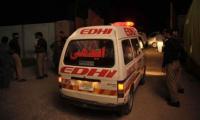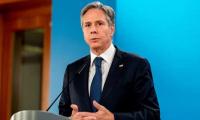In 2018, the Federal Directorate of Education, which manages over 423 public educational schools and colleges in Islamabad, was transferred back to the Ministry of Federal Education & Professional Training (MOFEPT) after spending seven years under the disbanded Capital Administration & Affairs Division (CAAD).
While the FDE had several ‘pre-existing conditions’ at the time of the 18th Amendment, things became worse under a division that neither had the necessary expertise/experience of handling education departments nor could give the attention the latter required. As a result, the FDE returned to the MOFEPT as a department marred by ad hoc-ism, constant litigation, leadership struggles, pressure groups and, worst of all, skydiving education delivery and management standards. It also missed out on many of the reforms that were taking place in the provinces!
The challenges the FDE faces can be broadly categorized into the following: direction, management, capacity, fiscal and delivery. The FDE, for most of the last decade or two, has seriously lacked direction. Many at the FDE/ educational institutions are fixated in the pre-18th Amendment era where they enjoyed a much bigger role and influence in the national educational landscape. Others want a return to the ‘Model College’ era where some select educational institutions enjoyed complete autonomy under independent boards.
Every identifiable group (school teachers, model college professors, principals, FDE HQ employees) feels that only its members can successfully manage affairs at the FDE. Hardly a few are interested in what really matters: delivering universal quality public K-12 education to all children in Islamabad. Beyond day-to-day firefighting, the FDE as an institution has no idea where it is headed or what it wants to achieve.
This ties into the management issues. Since 2008, there has been no consistent leadership at the FDE. The director general has been changed 25 times in 13 years. This gives an average time of six months per DG, with many having served less than three months. Several reasons factored into this game of musical chairs: unclear rules of appointment, internal pressure/lobby groups, frivolous litigation, personal vendettas, a disinterested CAAD, and local ICT politics.
As a result, nothing has been constant apart from ad hoc ism. At a more general level, FDE management is inundated with low-level mundane tasks: transfers, postings, deputations, leaves, regularization, retirement etc. This leaves very little time for important things like policymaking, standard setting, recruitment & training of teachers, and student assessments etc. To make things worse, record keeping has historically been abysmal.
Compounding the management issues are the capacity constraints. Horrendously outdated recruitment and promotions rules have left the FDE HQ at the mercy of unqualified support staff that has wiggled its way into management and specialized positions. While the FDE has to perform corporate functions – it oversees an average annual spend of around Rs10 billion and has almost 13000 employees – there is hardly anyone with a degree or professional experience in areas like accounts, finance, human resources, legal, information technology, monitoring & evaluation, project management or even communication. At the same time, there are no education experts that can inform the technical policy angles highlighted in the previous paragraph. The general quality of human resource at educational institutions is no different.
Delivering public services requires fiscal resources. The overall budgetary allocations appear to be sufficient in nominal terms – after all, Rs10 billion is not a small amount. However, breaking it down further presents a rather humbling picture. A significant majority of the recurring budget is essentially employee-related expenditure (payroll, allowances, housing etc). A very small portion goes towards operational costs (textbooks, utility bills, cleaning, transportation, school projects, sports, extra-curricular etc) and almost none is available for maintenance and repairs.
In short, costs are ballooning (HR, textbooks, utilities etc) and with a nominal budgetary increase of 1-2 percent annually, there is increasingly less every coming year for meaningful operations. With the enactment of the Right to Free and Compulsory Education Act, 2012 in Islamabad, the FDE and its institutions are under an obligation not to receive any sort of contribution from students’ parents for school/PTA Funds. At the same time, there has been no budgetary allocation in lieu of these funds. As these funds were used for essential repairs, maintenance, and many other co and extracurricular activities, educational institutions are operating with severe fiscal limitations.
The FDE has several challenges when it comes to the delivery of public education. In summary, the challenges, doubling as goals, can be seen in its recently adopted motto ‘Access – Quality – Equity’. The FDE has little coverage in population centers that have emerged in the last two decades. From 2011 to 2018, no new schools/colleges were planned or built in Islamabad. Availability of good sites beyond CDA-controlled areas is a challenge. Typically, sites allocated/donated are unsuitable (near drainage streams, in a depression, on a hill etc) for construction. In CDA-controlled sectors, there is growing pressure to share existing and potential sites reserved for public schools with the private sector.
Out-of-school children is another issue that needs to be confronted. According to one estimate, almost 11,000 children were out of school just in 2019 and the numbers are increasing. Girls are worse off than boys when it comes to access. This is for several reasons including but not limited to a long distance from the nearest primary/secondary school and non-availability of adequate water & sanitation facilities.
Unfortunately, even for those who have access to public schools, the situation is still far from satisfactory. Save a few, most FDE educational institutions provide sub-standard education when compared to the private sector and national/international benchmarks. This isn’t surprising though. There is a severe shortage of teachers – at the moment, the FDE is struggling to provide even 1.5 teachers per classroom. Of the teachers that are available, a significant majority is only able to teach art subjects (Urdu, history, Islamiyat). There is a severe dearth of instructors for English, math and science.
Due to the disinterest of the CAAD, infighting between teaching cadres, litigation, and the 2011 regularizations, there was no recruitment of school teachers from 2009 till 2019. And the cherry on top: almost one-third of existing teachers will retire in the next 5-10 years, leaving a huge teacher gap. On top of it all, there are no mechanisms in place for mandatory teacher training prior to or after induction. In addition to the teaching problem, there is no focus on STEM education and usable life skills. Result: little to no meaningful learning even when children go to schools. We are not discussing textbook and curriculum issues here as they are beyond the remit of the FDE.
Then comes the question of equity. While conditions are not ideal at any public educational institution, some are way worse than others. All the relatively better schools (more space, higher funding, more teachers, good leadership) are located in CDA sectors. The majority of the below average institutions (less space, low funding, few teachers, bad leadership) are in rural Islamabad. Students in the rural periphery of Islamabad (Tarnol, Barakahu, Nilore, and Sihala areas) are worst hit, and are kept away from the better schools present in CDA urban sectors due to low socio-economic mobility, transportation issues, and elite capture.
The problem is compounded by perpetually providing relatively more resources to relatively better schools, leaving students with lower levels of learning at below average schools in a vicious cycle. The socioeconomic issue here is quite straightforward. Children from families with relatively high levels of income and better social connections are able to get into one of the better 19 Model Colleges. The remaining end up in the former FG schools (now known as Model Schools) that rank considerably lower than their Model College counterparts.
These are only some of the major challenges the FDE faces – public education is a vast subject and no one article can ever do justice to all aspects. The next article in this series will focus on some of the solutions the MOFEPT and FDE have worked on in the past two years along with what more needs to be done in the coming years.
The writer is a public servant who has served as joint secretary, Ministry of Federal Education & Professional Training and director general, Federal Directorate of Education.
Twitter: @SyedUmairJaved
India's borrowing from Israeli assassination playbook began in earnest after Pulwama incident in 2019
Government is determined to unleash full power of Reformistan’s economy and pave way for unprecedented growth,...
Country is deeply divided, and this fragmentation cannot be addressed through symbolic actions or occasional...
SBP and SECP must urgently issue clear and concise regulations defining legal status of cryptocurrencies in Pakistan
Pakistan secure its sovereignty, fortify its defence, and rise above limitations imposed by punitive external measures
Old-fashioned ideas resist change and people prefer an unchanging social atmosphere over a cautious and prudent move...







